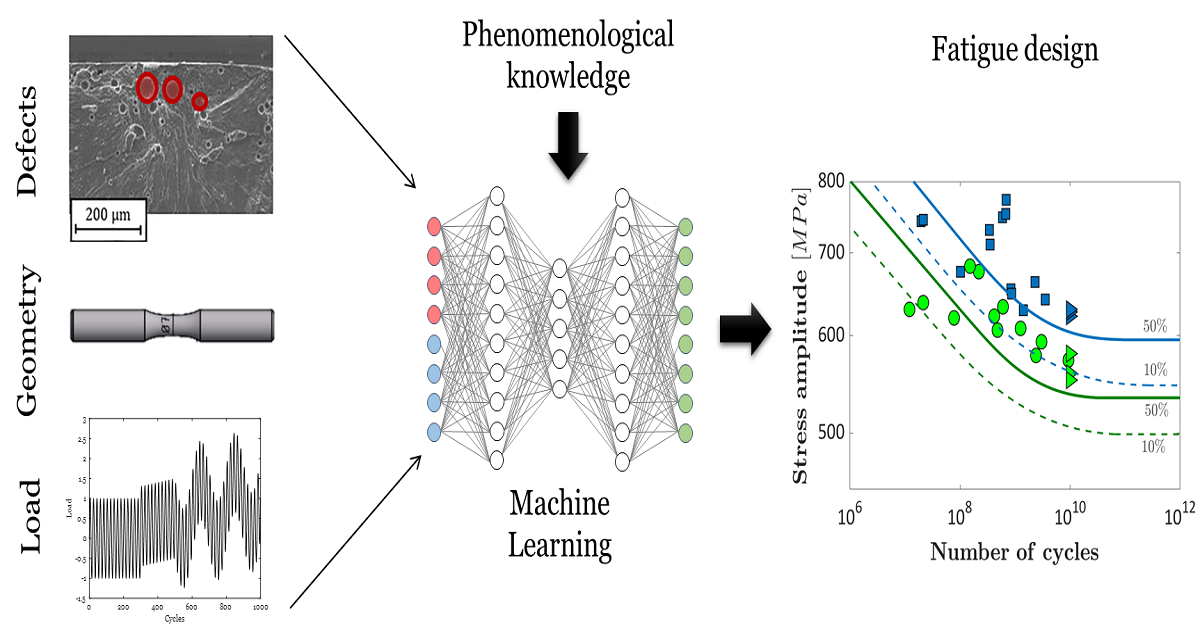Machine Learning for Fatigue Design
A special issue of Applied Sciences (ISSN 2076-3417). This special issue belongs to the section "Materials Science and Engineering".
Deadline for manuscript submissions: 30 September 2024 | Viewed by 2266

Special Issue Editors
Interests: statistical analysis of fatigue data; high-cycle fatigue and very-high-cycle fatigue; probabilistic fatigue and fracture; structural integrity of additive manufacturing materials and components
Special Issues, Collections and Topics in MDPI journals
Interests: high-cycle fatigue and very-high-cycle fatigue; probabilistic methods in fatigue and fracture; fatigue damage; structural integrity of additively manufactured and composite materials; failure analysis.
Special Issues, Collections and Topics in MDPI journals
Interests: composite structures; composites; damage assessment; icme; lightweight design; machine learning; mechanistic data science; multiscale; smart materials; structural health monitoring
Special Issue Information
Dear Colleagues,
The fatigue response is governed by concurring phenomena, e.g., applied load, manufacturing defects, material microstructure, component size, residual stresses, that must be accounted for to guarantee a safe design. Statistical and empirical models have been largely preferred to phenomenological approaches over the years, due to the complexity arising from the numerous governing factors and their interactions. The recent advancements in the field of machine learning methods presents an opportunity for innovative data-driven approaches that can predict the fatigue response learning from the experimental observation. The increasing interest of the engineering community to data-driven methods fostered their application to fields, including as structural health monitoring and material modelling, which demonstrate the huge potentiality of data-driven methods to predict complex responses.
This Special Issue aims at collecting the recent advancement in the machine learning application to the fatigue design of structures. Research articles on the application of machine learning methods (e.g., neural networks, gaussian process, SVM) and its integration with phenomenological and empirical knowledge (e.g., physics-informed, theory-guided, physics embedded) to the fatigue design and literature reviews are welcome.
Dr. Davide S. Paolino
Dr. Andrea Tridello
Guest Editors
Dr. Alberto Ciampaglia
Guest Editor Assistant
Manuscript Submission Information
Manuscripts should be submitted online at www.mdpi.com by registering and logging in to this website. Once you are registered, click here to go to the submission form. Manuscripts can be submitted until the deadline. All submissions that pass pre-check are peer-reviewed. Accepted papers will be published continuously in the journal (as soon as accepted) and will be listed together on the special issue website. Research articles, review articles as well as short communications are invited. For planned papers, a title and short abstract (about 100 words) can be sent to the Editorial Office for announcement on this website.
Submitted manuscripts should not have been published previously, nor be under consideration for publication elsewhere (except conference proceedings papers). All manuscripts are thoroughly refereed through a single-blind peer-review process. A guide for authors and other relevant information for submission of manuscripts is available on the Instructions for Authors page. Applied Sciences is an international peer-reviewed open access semimonthly journal published by MDPI.
Please visit the Instructions for Authors page before submitting a manuscript. The Article Processing Charge (APC) for publication in this open access journal is 2400 CHF (Swiss Francs). Submitted papers should be well formatted and use good English. Authors may use MDPI's English editing service prior to publication or during author revisions.
Keywords
- fatigue
- machine learning
- neural networks
- design
- structure
- durability
- defects
- crack propagation







